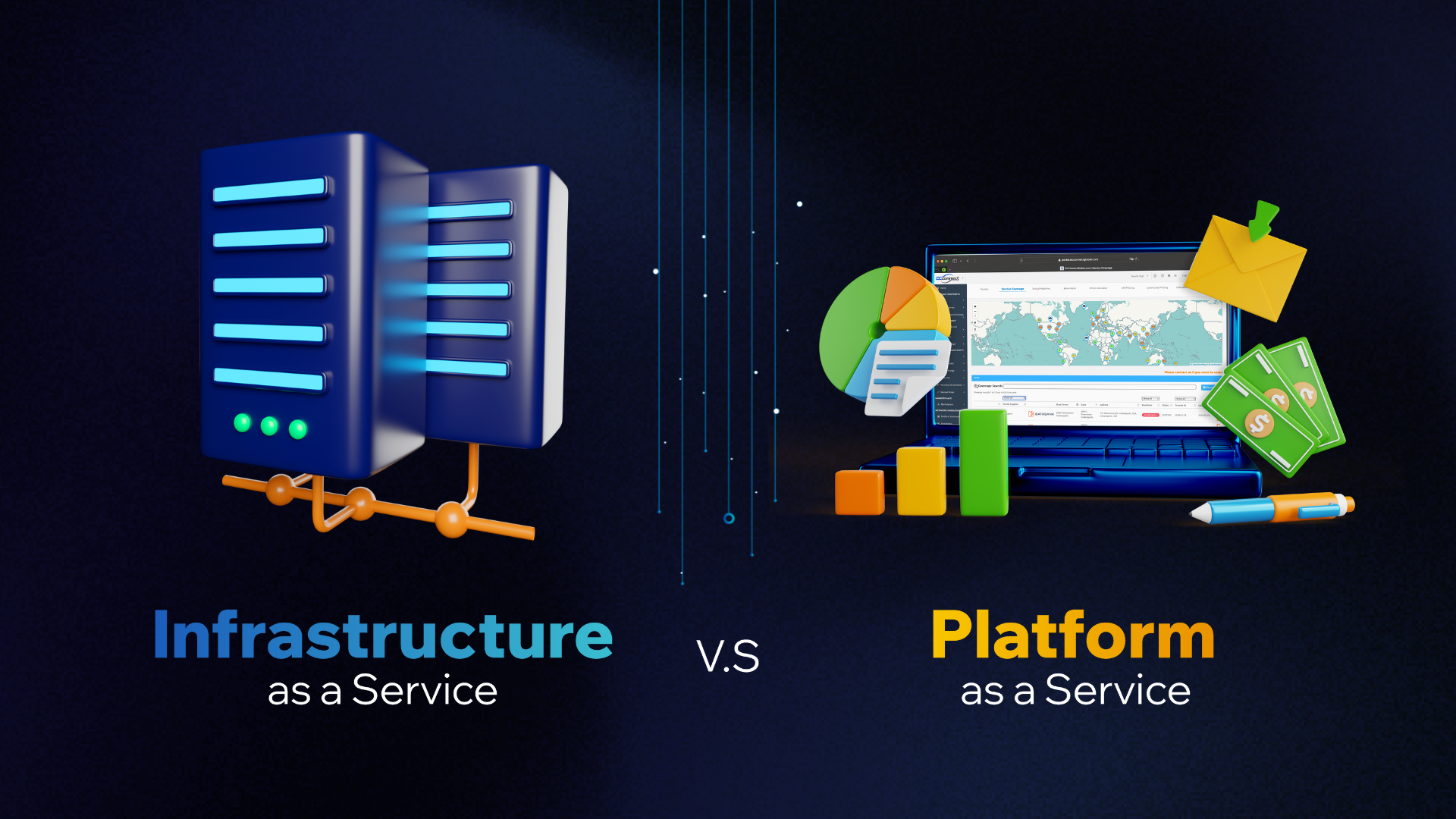
Infrastructure as a Service vs Platform as a Service
The telecom industry, traditionally rooted in physical infrastructure and hardware, is undergoing a massive shift toward cloud-based solutions to meet growing demands for speed, reliability, and scalability. Two cloud service models, Infrastructure as a Service (IaaS) and Platform as a Service (PaaS), have emerged as fundamental options, each offering distinct advantages and addressing specific needs within the telecom sector. In this guide, we’ll explore the differences between IaaS and PaaS, their applications, and why they’re vital to transforming telco industries. Understanding Infrastructure as a Service (IaaS) Infrastructure as a Service (IaaS) is a cloud computing model that provides virtualized computing resources over the internet. In an IaaS setup, telcos gain access to hardware such as servers, storage, and networking without the need to manage the physical infrastructure. This model is particularly appealing for telecom companies that need robust, flexible infrastructure to scale up or down based on demand. With IaaS, telcos pay for the resources they use, reducing capital expenses and allowing telecoms to focus on innovation. Companies like Amazon Web Services (AWS), Microsoft Azure, and Google Cloud offer popular IaaS solutions that enable telcos to operate with high flexibility. The Role of Platform as a Service (PaaS) in Telecom In contrast, Platform as a Service (PaaS) goes a step beyond IaaS by providing a cloud-based environment with both infrastructure and application development tools. PaaS simplifies the development, testing, and deployment of applications, which is particularly useful in telecom for creating customer portals, billing systems, or digital services. With PaaS, telco developers can use pre-built frameworks and tools to build applications faster and more efficiently. This not only speeds up time-to-market but also minimizes the complexity of managing underlying hardware and software. Popular PaaS offerings include solutions from IBM Cloud, Google App Engine, and Microsoft Azure, which cater to telecoms looking to innovate quickly. Key Differences: Infrastructure as a Service vs Platform as a Service in Telco Both IaaS and PaaS offer unique benefits to telecom companies, yet they serve different operational needs. Here are the primary distinctions: Why Telcos Should Consider IaaS Lowered Infrastructure Costs By adopting IaaS, telecoms can reduce expenses related to data center maintenance and hardware purchases. This approach enables telecom companies to allocate resources more effectively, investing in service improvements or innovations instead of capital-heavy infrastructure. Enhanced Flexibility and Control IaaS offers flexibility that is vital for the telecom sector. Telcos can create and configure virtual environments based on their specific needs, whether for data storage, processing, or handling network traffic surges. The ability to control infrastructure details allows telcos to fine-tune resources for optimal performance. Improved Disaster Recovery and Backup In IaaS, telecom companies can deploy advanced disaster recovery mechanisms without investing in separate backup facilities. Cloud providers offer built-in redundancy and backup options, minimizing downtime and data loss. Advantages of PaaS for Telecom Industries Accelerated Time-to-Market PaaS offers pre-configured platforms that allow telecoms to develop and deploy applications faster. For instance, a telecom provider launching a new digital service can quickly build, test, and release it using the tools and frameworks available in a PaaS environment. Reduced Complexity in Application Development With PaaS, telecoms can focus on creating unique user experiences without worrying about backend infrastructure. This model is particularly advantageous when developing applications for customer engagement, such as self-service portals and mobile apps, which require rapid deployment and constant iteration. Improved Collaboration and Productivity PaaS platforms are often equipped with tools that streamline collaboration between development teams, which is valuable for telecom providers working on joint projects. Shared development environments enhance productivity by making it easier for teams to share code, test updates, and address issues in real-time. Use Cases: Infrastructure as a Service in Telco Use Cases: Platform as a Service in Telco Combining IaaS and PaaS in Telco Strategies For many telecom companies, the most effective cloud strategy involves combining both IaaS and PaaS. For example, a telecom provider could use IaaS to support large-scale infrastructure needs, such as data storage and networking, while deploying PaaS for application development to expedite service rollouts. This hybrid approach allows telcos to optimize resource usage, speed up development, and maintain a high level of operational control. Future Trends: IaaS and PaaS in Telecom As telecoms continue to embrace cloud solutions, we expect several trends to shape the future: FAQs What are the main differences between IaaS and PaaS in telecom? Which is more cost-effective for telecoms, IaaS or PaaS? How does IaaS improve network management for telecom companies? Can telecoms use both IaaS and PaaS together? Why is PaaS beneficial for telecom app development? What future trends will impact IaaS and PaaS in telecom? Conclusion As telecom companies navigate the complexities of a cloud-driven landscape, understanding the unique advantages of Infrastructure as a Service (IaaS) and Platform as a Service (PaaS) is essential. IaaS provides the control and flexibility telecoms need to manage large-scale infrastructure, while PaaS accelerates application development and innovation. By leveraging these models together, telecom providers can enhance service delivery, improve operational efficiency, and stay competitive in a rapidly evolving market. The future of telecom rests on cloud technologies, and both IaaS and PaaS will play central roles in shaping a resilient, agile, and customer-focused industry.
